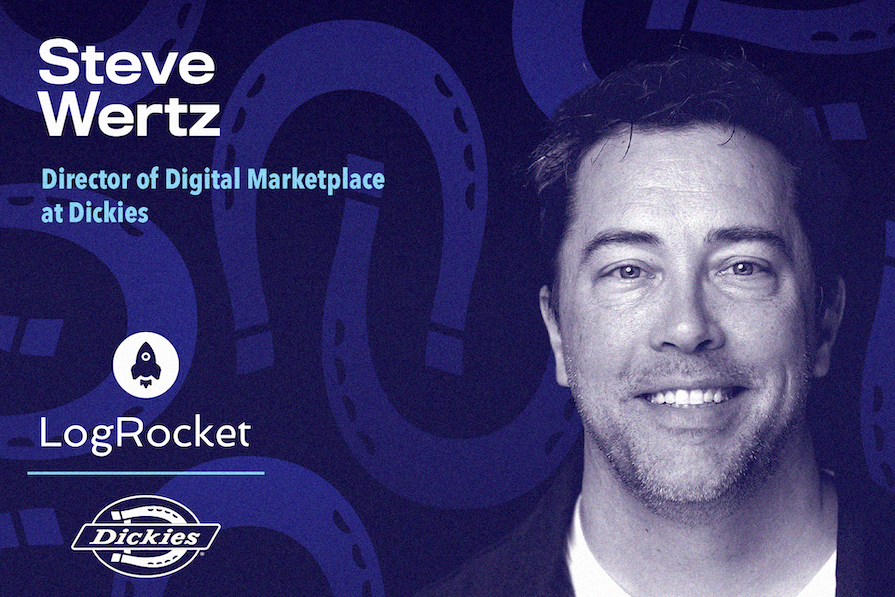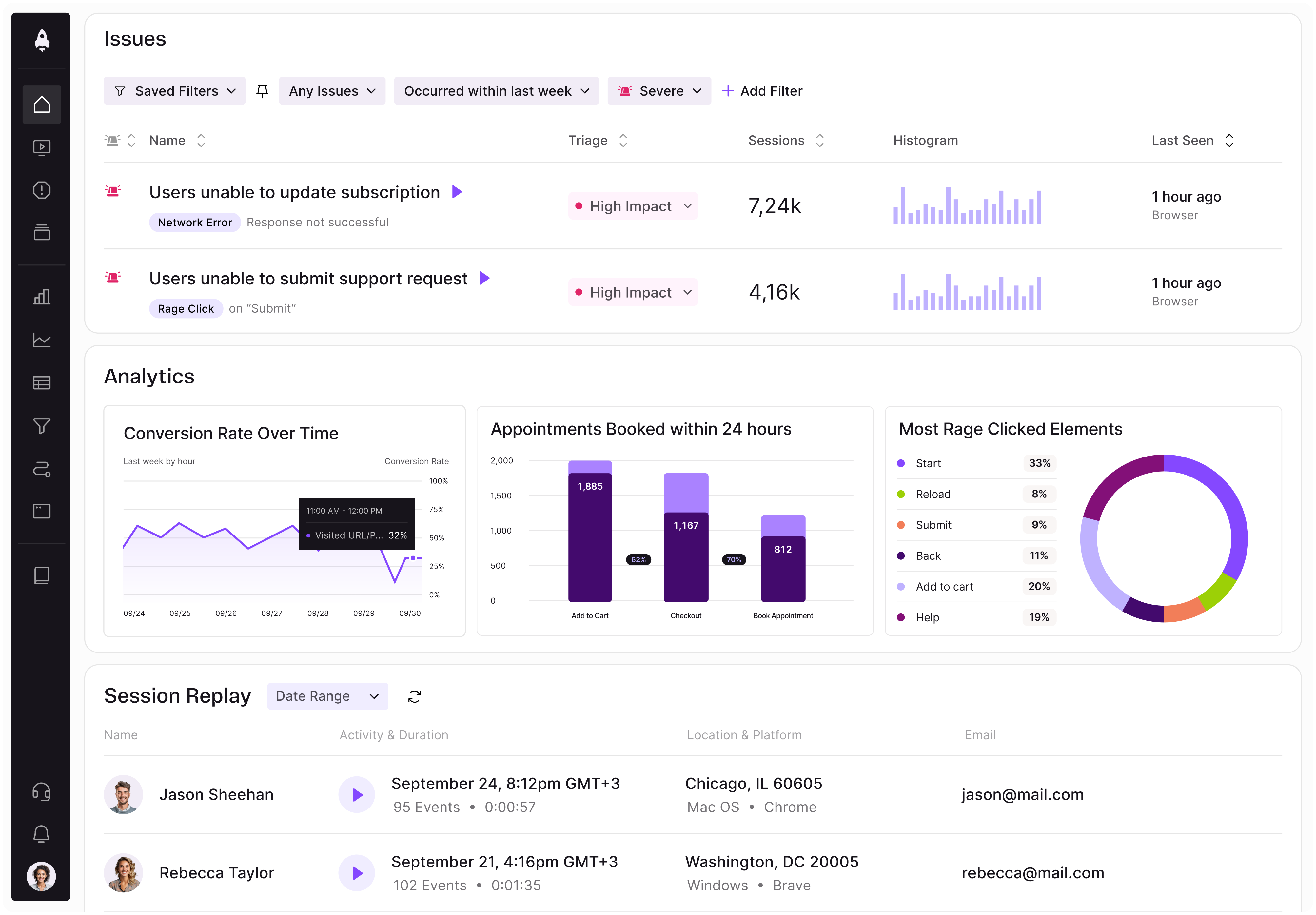Steve Wertz is Director, Digital Marketplace at Dickies, a functional workwear company. He began his career in corporate sales in Minor League Baseball before becoming a territory manager at Chuckanut Products. From there, Steve spent a decade working as Director of Ecommerce and Membership at Petmate before joining Dickies.

In our conversation, Steve talks about how ecommerce and branding have adapted and transformed over the past few decades, including with the channels and platforms they operate on. He also shares the importance of maintaining and protecting the relationship between buyers and sellers, as well as creating cohesion across all the platforms a brand sells products on.
It’s interesting to reflect on where I’ve been, the different companies and industries I’ve worked in, and how things have changed overall. 20 years ago, Amazon was a shiny new toy that we all became addicted to. Amazon wanted to put up everything that a manufacturer would make, and the manufacturer gave it to them without a second thought and just hoped it would sell.
I remember making pitch decks with hundreds of slides, just like you would for other retailers, with the hopes of selling every last widget. The Amazon vendor managers would say, “Yeah, I want it all.” As a salesperson, I didn’t know how to react. It was like, “What do you mean you’re buying all the items? I haven’t even presented them to you yet!”
Back then, Amazon didn’t have any true online competition. Walmart.com was so far behind that they weren’t even a relevant comparison. It’s amazing to see how far they’ve come in the past couple of years. Early competitors like Jet.com and Quidsi made an impact and were subsequently acquired. Today, Amazon has several competitors in various industries. Along with Walmart.com, other major retailers are doubling down on digital, such as Target and Lowe’s. We’ve also been introduced to price matching — things look so different today than they did 20 years ago.
For sure. With platforms specifically, there are tons that our brand can work on and that you have permission to play in. It all goes back to knowing your brand and your consumer, as well as doing your research on the right place to invest your time. It’s important to understand your products, headcount, bandwidth, and marketing dollars, and to try to maximize each one.
It’s also important to realize that not every site that is willing to list your product is right for your brand. Trying to be on every site is not good for your brand, the consumer, or your mental health! You want to align yourself with retailers that have similar values and consumers to those of your company.
First, I think people have a tendency to out-analyze themselves to confirm whatever point they are trying to make. This is confirmation bias — I see this in sports all the time, especially baseball. There are so many ways to analyze that often, we forget the bottom line. We need to ask: are we scoring runs and winning games? That’s why whenever I look at metrics, I go to the scoreboard first. Are we driving traffic and are we selling products? Once I know the answer to those two questions, I can dig deep and see what else is going on.
Very early in my career, a boss of mine said, “It’s OK to be up and it’s OK to be down, but it’s never OK not to know why.” I’ve taken that to heart.
Absolutely — today’s environment makes it easier to understand the why. With traffic, for example, I love to know what kind of glance views we’re receiving and paying for. Are we exposing our brand to a net new consumer or are we simply talking to the same customer base that we’ve been talking to in the past? That’s important, because if we don’t find new pockets of consumers, we won’t grow — we’ll stay flat. And with attrition, staying flat is a pipe dream.
Without infinite budgets, we need to give consumers an amazing first experience so they’ll want to come back on their own and become brand loyalists. Do we make it easy for a consumer to make a purchase decision when they land on our detail page? Confusion leads to inaction, which doesn’t increase our total sales — especially with so many options out there. If a consumer is confused, they’ll just simply move on.
I also look at inventory and availability. Are we driving traffic to styles that are in a good position today and will also be in one tomorrow? So often, we review what’s going on today without understanding the future ramifications of increasing traffic (and ultimately increasing sales) to a certain style. Paying to stock yourself out is generally not a good strategy.
That’s why on Amazon, we looked at a metric called SoROOS, or Sourceable Replenishment Out of Stock, very closely. Are we paying to drive traffic to products that Amazon doesn’t have? And if Amazon doesn’t have it, is it because they haven’t ordered enough or because we don’t have any? Or, have they ordered those products but there’s a delay in getting them? Once you answer those questions, you can dive into supply chain or demand planning metrics.
Lastly, it’s crucial to understand how metrics and tactics interplay with each other, even if they’re relatively unrelated metrics. An ecommerce team needs to be unified because marketing affects supply chain and creative impacts finance, for example.
100 percent. That falls into what I was saying earlier about knowing what’s going on now and what’s going to happen next. If sales are up but rejected shipments and returns are also up, you might be fine today, but you’re going to have a problem tomorrow. Not only because you’ll accrue and actualize those returns, but because you’ll lose repeat customers. Your funnel is going to become even smaller.
That’s why having a pulse on product reviews and return data is super important. You need to look at that and link it back to the funnel so your product teams know what the consumer is saying. That’s all direct feedback from the voice of the consumer.
I’ve led these efforts at a couple of companies and I’ve also done some consulting work around brand protection. Brand protection is the overall umbrella, which includes counterfeits, copyright infringement, search term policies, and more. The biggest two in our world are minimum advertised prices and unauthorized sellers. Those are two issues that we address at Dickies and within the VF portfolio.
We spend a lot of time and energy developing the right product for the right price. All of that hard work, which takes months or years, can be immediately devalued by a rogue seller footballing around the retail price. To protect our image and ensure the long-term viability of our brand, we enforce a minimum advertised price on our core products. While each retailer retains the right to sell these products at any price it chooses, we want to ensure that all retailers can make enough margin to reap the benefits of buying and selling our line.
We’ve done the research, we know our consumers, and we know the consumer’s propensity to pay. We want our retail partners to leverage the work we’ve already done and make money. And with that, the near neighbor to price monitoring is unauthorized seller enforcement. The key here is to always be brand first. We have retail partners that we invest in, and they, in turn, invest in us. We want to protect that relationship.
Sometimes, unauthorized sellers that have no relationship with us get product off the gray market. If that happens and they have no desire to uphold our brand standards and policies, we need to clean it up. We owe it to our retail partners to have a clean channel. Software and agency are so imperative here — it is such a big task that’s way too much for one team to handle without the right solutions.
For sure. That’s why we work closely with our retail partners and our own DTC, as well as on a national promotion cadence. That way, there are opportunities to promote our products and compete on price. We run those at tent-pole events that make sense for our brand.
Ultimately, it’s about communication and relationship. In our virtual, digital world, it always comes back to relationships. Our true retail partners want to uphold our standards and policies and be brand first. They want to invest in our brand, and they benefit when our brand thrives.
A lot of times, things that could be viewed as brand diluting are just miscommunications or misunderstandings. If retail partners portray our product in a certain way or miscategorize it, that usually means we didn’t do a good enough job of explaining our product, its style and use case, how it should be priced, etc.
With the cohesiveness strategy, you have to think of the internet as one platform. We want to show up to the consumer the same way across multiple platforms — we don’t want to confuse them about what the Dickies brand represents. For example, we don’t want to appear one way on Amazon and a different way on DTC. We have one unified brand voice — the creative and brand teams hone in on this and communicate it out.
From there, yes, it’s one internet, but each website and platform has its own niche. You have to understand which portion of your product line or assortment fits with each platform. There’s a constant cycle of testing and learning. You need to look at your conversion funnel and product analytics and ask: what is causing consumers not to convert? Is it your product or is it the platform? Is it the experience?
Once you understand your strategy on each platform, you can maximize sales without overwhelming the consumer. This goes back to the evolution of ecommerce. Throwing everything up on Amazon and seeing what happens is in the past. Consumers no longer want to be subjected to pages and pages of products with slight variations. How many people actually go to the second page of search results on Amazon? Costco is an example of a retailer that does well presenting only a couple options for each product.
Yes, we start with DTC because they have the most first-hand consumer knowledge, so they need to be the best representation of our brand. We let them work through their assortment and promotion strategy. From there, we can determine which styles or colors should be exclusive to DTC, or maybe just have an exclusive runway at launch. From there, which styles should be exclusive to Amazon or Walmart? And lastly, when do we launch? We try to always have something within the “new” filter on our major partners’ sites. Staggering launches is helpful to always stay in that area of the website.
From there, it’s all about reading and reacting. If something is not performing up to expectations at one retailer, can we pivot and launch mid-season on a different platform? Is the pricing wrong or did we put it in the wrong assortment? Instead of marking it down, can we launch it somewhere else where it’s being viewed by a different audience for the first time? This is especially possible with third-party marketplaces where they don’t hold inventory, like Target Plus, ShopSimon, etc. It’s that constant refining of assortment, cutting off bottom performers, and putting them somewhere else.
No, they’re actually drastically different, especially regarding which analytics are provided for free and which we have to pay for. Kudos to our analytics team — they have to take a lot of different forms of data and put them into cohesive reports so we can get a good snapshot of what’s going on. Sometimes, we get great information, and sometimes we have to back into some numbers and make some assumptions. But that’s why there’s a lot of testing, learning, and two-way doors.
Utilize technology, but ultimately, understand what you’re trying to solve for. There is a tech solution or an agency solution for everything. Some solutions mean solving a problem that you don’t have, though, so understand your needs. No one has infinite budgets, so focus on taking advantage of your top opportunities and solving for your top problems. Engage and talk with other leaders, and listen to pitches from various tech companies.
Conversations are free, and this is a lonely profession in a lot of ways. Many of us are introverts, myself included, but I’m constantly pushing myself to get out there and just understand what’s available.

LogRocket identifies friction points in the user experience so you can make informed decisions about product and design changes that must happen to hit your goals.
With LogRocket, you can understand the scope of the issues affecting your product and prioritize the changes that need to be made. LogRocket simplifies workflows by allowing Engineering, Product, UX, and Design teams to work from the same data as you, eliminating any confusion about what needs to be done.
Get your teams on the same page — try LogRocket today.

A practical framework for PMs to use AI in ideation without sacrificing judgment, strategy, or decision quality.

A practical five minute revenue estimation method to help product managers compare ideas, drop low impact features, and prioritize smarter.

A practical guide for PMs who want to stop being bottlenecks, delegate smarter, and lead teams effectively with a clear ownership framework.

Stop letting unreliable data block features. Treat data as inventory to track quality, ownership, and ship with confidence.